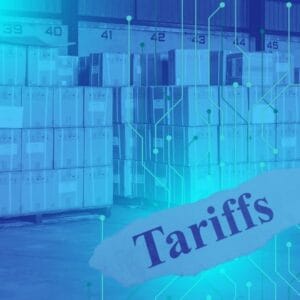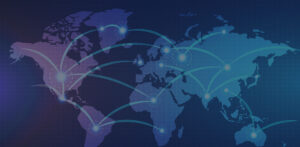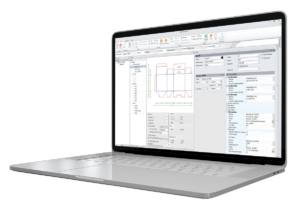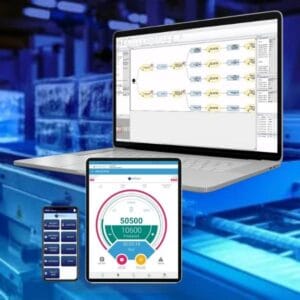“The packaging industry is no stranger to disruption—but 2025’s trade policy landscape represents one of the most significant shifts in recent memory.” –Lindsey Naples, Keypoint Intelligence
SUMMARY
The tariff situation of 2025 has impacted the entire global supply chain, and the packaging industry is feeling the pressure. Rising raw material costs and unpredictable supply chain timelines are causing converters to make changes to their processes.
How can manufacturers navigate through uncertainty and inflated operating costs?
Technology, like automation and AI, can protect margins, and maintain competitiveness even in a volatile trade environment.
Packaging Costs Impacted by Tariffs
Few sectors feel the weight of rising input costs as acutely as packaging. Corrugated boxes, plastic films, foils, labels, and aluminum cans all rely heavily on imported substrates. Manufacturers are now paying more for essentials such as recycled containerboard, polypropylene, and metal-based materials.
The current global tariff landscape is changing daily, causing ripple effects across the printing industry. Nearly all the key cost drivers are being impacted. The following information was updated as of August 2025 and is a snapshot in time.
Pigments, Coatings, Adhesives & Varnishes. Pigments and dyes used in printing inks, along with various petrochemical based coatings, adhesives and varnishes, are often imported from China and India. These key consumables may be affected by Section 301 tariffs ranging from 10% to 25%. In some instances, converters are seeing costs rise 10-15% due to tariffs on raw colorants and specialty chemicals. Sun Chemical, a leading ink supplier, has introduced a tariff surcharge on pigments produced both domestically and abroad, in response to increased costs from trade-related raw material tariffs.
 Paper & Pulp. The new 35% Canadian tariff, effective August 1, substantially raises the cost of importing packaging materials like pulp, paper, linerboard—making every shipment significantly more expensive. This means a folding carton printer in the U.S. paying $900/ton for Canadian paperboard might see costs jump to $1,215/ton.
Paper & Pulp. The new 35% Canadian tariff, effective August 1, substantially raises the cost of importing packaging materials like pulp, paper, linerboard—making every shipment significantly more expensive. This means a folding carton printer in the U.S. paying $900/ton for Canadian paperboard might see costs jump to $1,215/ton.
While there has been an increase in the tariff on imports from Canada to 35%, the Trump administration confirmed on July 11 that the exemption for United States-Mexico-Canada Agreement (USMCA) products, including newsprint from Canadian mills, will NOT be subject to tariffs when the new rate goes into effect.
Flexible Packaging Materials. The newly implemented 25% tariff directly impacts imported aluminum-based flexible packaging materials. This includes aluminum foils used for snacks, dairy products, frozen meals, and prepared foods; lidding films and seals essential for single-serve coffee pods (e.g., Keurig), yogurt cups, and ready-meal trays; induction seals and closures for bottles and jars, particularly in food, beverage, and pharmaceutical products; flexible pouches incorporating foil layers for food and consumer goods.
Steel & Aluminum. On June 4, 2025, tariff increases on steel and aluminum imports went into effect. As of mid-August, these tariffs have expanded further: 50% tariffs now apply to over 400 finished goods, including critical press components, robotics parts, and machinery sections used in printing and packaging production. Due to the U.S. – UK Economic Prosperity Deal, steel & aluminum imported from the UK was granted an exception with the tariffs remaining at the previous 25% rate pending further negotiations.
Other cost increases may be still seen, including packaging supplies, electrical components, sensors, freight charges, and more. As we’ve witnessed in the first two quarters of 2025, tariff wars are unpredictable, but the right technology can help you capture changing costs and their impact on job estimates, purchasing, profits and the future of your company.
The Tariffs Domino Effect
Supplier Diversification
To avoid tariff-induced price hikes, converters often search for suppliers and process alternatives to keep profit margins as stable as possible. Working out new supplier relationships comes with its own set of risks, sometimes resulting in longer lead times and delayed delivery.
Disrupted Global Sourcing
 Packaging manufacturers rely heavily on global supply chains for raw materials—aluminum, steel, pigments, adhesives, resins, and specialty coatings. When tariffs rise suddenly, costs increase overnight. But the bigger issue is volatility: companies can’t reliably forecast input costs. This creates uncertainty in procurement, pricing models, and customer contracts.
Packaging manufacturers rely heavily on global supply chains for raw materials—aluminum, steel, pigments, adhesives, resins, and specialty coatings. When tariffs rise suddenly, costs increase overnight. But the bigger issue is volatility: companies can’t reliably forecast input costs. This creates uncertainty in procurement, pricing models, and customer contracts.
Example: As aluminum tariffs jump from 18% to 35%, converters using aluminum plates for flexo or litho are forced to renegotiate supply contracts or absorb margin hits.
Stockpiling
In response, some operations turn to stockpiling in advance to avoid tariff-induced cost spikes. While this may stabilize your prices temporarily, it ties up capital, strains warehouse space, and can distort supplier forecasts. And if others are stockpiling too, inflated demand can drive prices up anyway.
Manpower
Let’s take into account the manpower you’re going to need to manage these changes. From price negotiations to supply chain issues, customs compliance to warehousing, these tasks increase labor costs and stretch existing teams, unless supported by efficient systems.
Additionally, when tariffs raise the costs of raw materials (aluminum, steel, resins, inks), converters and packaging manufacturers often face a choice: pass costs downstream (which brand owners resist) or absorb them. Absorbing costs reduces profit margins, and companies may respond by freezing new hires, reducing overtime, and cutting staff.
This can lead to layoffs or reduced hours, particularly in smaller or mid-sized firms with thinner margins.
Long-Term Volatility & Business Risk
Unlike one-time cost increases, tariffs create an unstable operating environment. Packaging companies must build contingency plans around policy changes they can’t control. The volatility can ripple through several critical areas: Capital investment decisions (buying new presses or automation equipment becomes riskier when parts face tariffs), customer trust (brand owners want cost predictability; volatility erodes confidence) and competitiveness (foreign competitors not affected by tariffs can undercut U.S. manufacturers).
Build Resilience Through the Power of Automation and AI
Tariffs are creating a perfect storm of increased input prices, operational unpredictability, and supply chain pressure for U.S. packaging manufacturers. Yet, you could see this development as a signal to future-proof operations. Investing in digital tools for end-to-end supply chain visibility and centralized data systems allows your teams to make smarter, faster, and more informed decisions across purchasing, inventory, and production.
Enter HiFlow ERP/MIS.
HiFlow ERP is equipped with intelligent features to help printers and converters make informed decisions about their workflow, through all seasons and cycles.
As raw material costs fluctuate, HiFlow ERP uses automation to update job estimates according to new material cost adjustments in real time, helping you protect profit margins and avoid underpricing.
 Maintain accurate cost visibility with current and forecasted raw material pricing. HiFlow integrates supplier data and pricing trends so your team can make informed, up-to-date purchasing decisions.
Maintain accurate cost visibility with current and forecasted raw material pricing. HiFlow integrates supplier data and pricing trends so your team can make informed, up-to-date purchasing decisions.
Streamline your procurement workflows with AI-powered automation. HiFlow ERP helps your team automate document management from multiple vendors, track delivery schedules, and flag potential cost and inventory issues early.
Minimize the urge to stockpile with accurate usage forecasting based on your operations and production mix. Reduce excess inventory by aligning purchasing with real-time demand, open purchase orders and historic production trends. And its customizable dashboards monitor efficiency KPI metrics that directly buffer against tariff-related cost spikes.
Future-Proofing Packaging Operations
 Tariff-driven uncertainty isn’t going away—but your business doesn’t have to stand still. With HiFlow’s AI-powered ERP and expert consultants, manufacturers can streamline workflows, reduce risk, and build resilience to weather market volatility. Our team partners with you to transform today’s challenges into tomorrow’s opportunities, helping you future-proof your operations against ongoing disruption.
Tariff-driven uncertainty isn’t going away—but your business doesn’t have to stand still. With HiFlow’s AI-powered ERP and expert consultants, manufacturers can streamline workflows, reduce risk, and build resilience to weather market volatility. Our team partners with you to transform today’s challenges into tomorrow’s opportunities, helping you future-proof your operations against ongoing disruption.
Ready to take control? Contact HiFlow Solutions today for a demo and see how our ERP innovations can help you outsmart tariffs and thrive in any market.
Additional articles you might find valuable
Bridging the Gap: Leveraging an ERP/MIS to Mitigate Skilled Labor Shortages
SUMMARY The skilled labor shortage has become a significant challenge across various industries, with sectors like manufacturing, logistics, and packaging feeling the impact most acutely. As the demand for skilled labor continues to outpace supply, organizations are...
Shop Floor Scheduling: Are You Getting the Most out of Your Plant’s Production Capacity?
SUMMARY Summary: SEMrush data from 2024 shows that companies integrating advanced scheduling technologies experience a 25% increase in production efficiency. Getting the most out of your plant’s capacity means implementing a robust ERP that helps plan, execute, and...
Seeing is Believing: Exploring HiFlow’s Highly Visual Workflow
SUMMARY Sometimes it can be difficult to quickly get to a full 360-degree view of the converter’s operation, including both production and business elements. That’s why HiFlow developers have placed a strong focus on developing a highly visual representation of a...



